The Bald & Beautiful - Vultures
The Necessity Of Vultures & The Ones I've Seen
BIRDS
Aniruddha Bhattacharya
8/19/20254 min read
Pics : 1 - 2 = Slender Billed Vulture ; Kaziranga National Park | Pics : 3 - 7 = Lapet Faced Vulture ; Masai Mara National Reserve | Pics : 8 - 11 = White Backed Vultures ; Masai Mara National Reserve | Pics : 12 - 16 = Indian Vultures ; Bandhavgard National Park
Mogambo was a character in an 80’s movie called Mr. India. Amrish Puri did such a good job of playing the villain there that till date people use Mogambo as a reference point for a bad, bald man. In fact, Mogambo ruined life for many a bald man in India. He wasn’t just evil, he was distinct cause, he was bald. Now, if scavenging is “bad” cause they eat the dead well, Eagles scavenge, Crows scavenge, Hawks, Storks, Ravens, Condors, guess what all of them have in common? They’re all big birds who scavenge when the opportunity presents itself. But who gets the bad name for scavenging? The poor, bald, vulture. It’s cause he’s bald I tell you. That makes him different and hence tsk, tsk, bad, bad. However in reality, it’s the so called bad Vulture who has ensured that disease and infection from carcasses doesn’t kill us all. The irony of it really and to add to that, in India, we’ve gone and killed a whole lot of these poor guys with our attempts to prolong the lives of cattle which in turn caused more human deaths ( Ref : We Killed Off Vultures & Our Own Died ) and let’s not even get into how we as a society be it in the East or West of the planet have historically treated our own sanitation workers. All of that cause we’re scared of differences. We’re scared cause we are and behave just like every beast who infers that if it’s different, it must be bad. Well, guess what ? Now we’re scurrying to save and revive the poor buggers cause we know better aren’t we?
Vultures are bald cause they gotta stick their necks into where we don’t dare to. The don't really circle the dead by the way, they use the currents and just seeing them do that is what shows off the beauty of these guys the best. It's just so grand to see these awesome birds in flight. Polishing off a carcass down to almost nothing is a very specialized skill set that the Hyena and the Vulture possess. Hyena feces is chalky white from bone consumption and Vultures and their bald heads pretty much go in all the other spaces of a dead body. That’s their specialty and their utility and we should thank them for that let alone ostracize them for it. They've evolved for it and are not adept at hunting at all to feed themselves. These guys are categorized into the Old World Vultures and The New World ones and although they share many resemblances, they aren’t really related. They share resemblance because of convergent evolution. I’ve only seen Old World Vultures found in Africa, Asia and Europe so far and there are 16 Species of those in total of which, you see 4 here.
The first good photos I scored of Vultures was in Bandhavgarh ( Pics : 12 - 16 ). It was a couple of Indian Vultures. I’d seen more of these guys at Ranthambore but the ones in Ranthambore were on the ground and feeding. The angle was bad and the subjects were too far. I lucked out with catching one of these guys taking off the next time around ( Pic : 14 - 16 ). These guys are also called the Long Billed Vultures. They’re known to be strong fliers and for soaring on thermal convection currents and can easily fly for 6 hours or so nonstop. They are known to travel hundreds of miles every day in their daily scavenging operations and range from central to peninsular India these days. They share their range with the Slender Billed Vultures, a sub species ( Pics : 1 – 2 ) who I saw in Kaziranga. These guys are found to the North of where their Long Billed cousins mostly hang out as well these days in India. They however, tend not to cover as long distances as their cousins and are more sedentary in nature.
Kenya introduced me to the odd Lappet Faced Vulture, named so for the distinctive fleshy flaps of skin called “lappets” that hang from the sides of its head ( Pics : 3 – 7 ). These, along with the reddish face and two toned beak give these guys a very distinct look among Vultures. These Vultures are found in the dry savannah, desert, thorn bush, arid plains, deserts and open mountain slopes. They prefer open country with a scattering of trees and minimal grass cover. They are the largest and strongest of the African Vultures and are well known for their aggressive behavior and powerful beaks. We also saw the White Backed Vultures in Masai Mara ( Pics : 8 - 11 ). In fact a whole tree full of them right after sunrise. It was quite a sight really given how rare those are over there and not odd at all for them to be at that vantage point. Quite the sight still. These guys are the most common of the African Vultures with a range of 24, 300, 000 km2. They are well known for their social behavior like being found on the same lone tree like we found them. These guys primarily stick out among other Vultures because of their colour. I personally find these guys the best to photograph among the ones I’ve seen so far because of the contrast of brown and white that comes out in their photographs.
There are sixteen Old World and seven New World Vulture species. Of those, only five New World Vulture species are of least concern as per their conservation status. Humans need a plan cause there is no backup for waste disposal in the wild. We don’t have autonomous drones and robots yet and we’re not teaching our children the service these creatures do for our planet. Sure, we’re trying to conserve them in the reserves just like every other species but is that truly enough?
I’m telling you, Humans need a plan here and a better one with more teeth. These big, bad, Mogambos of the wild need us now just as much as we have always needed them. Like it or not, Vultures are our friends and we need to love them back for it.

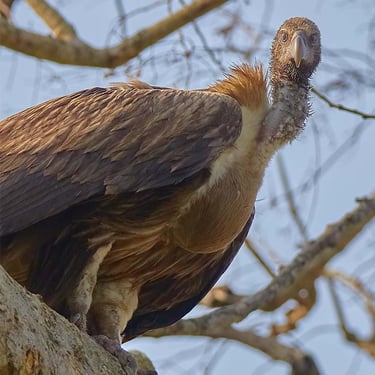
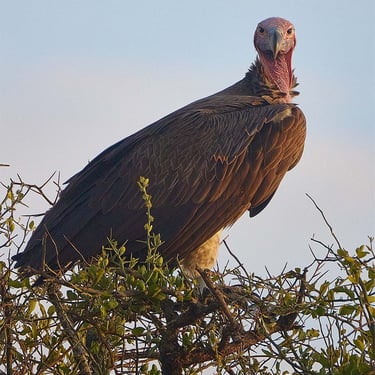
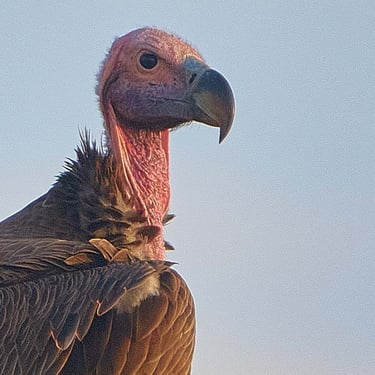
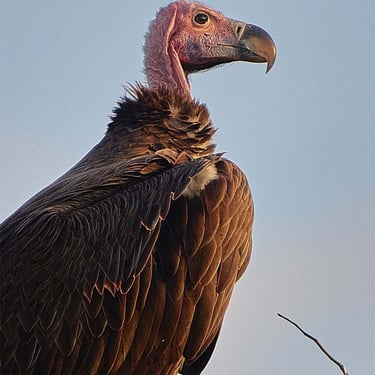
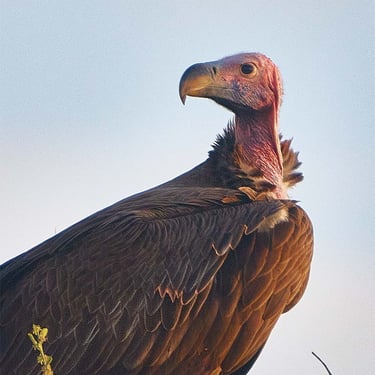
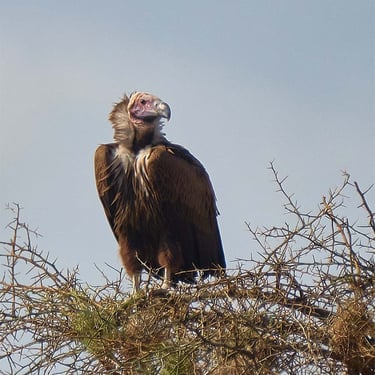
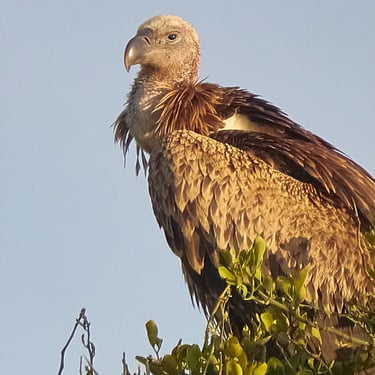
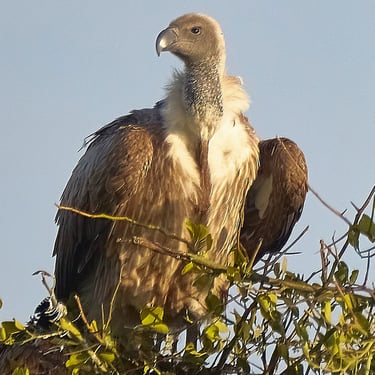
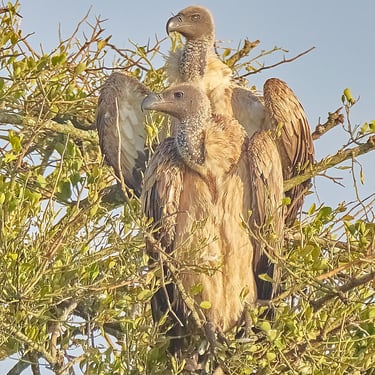
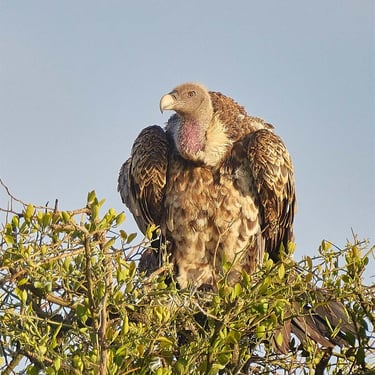

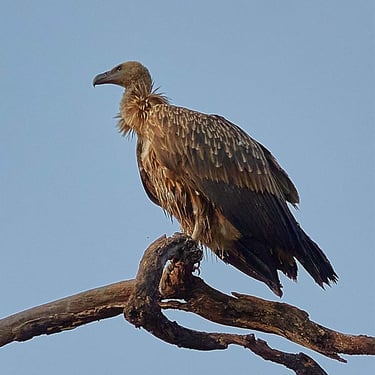
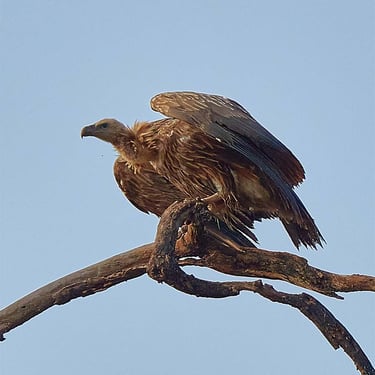
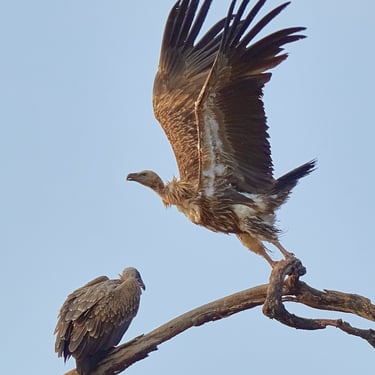
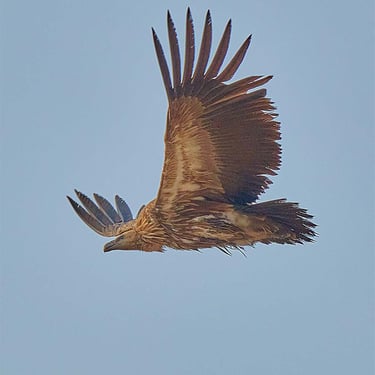
© 2025. All rights reserved.
